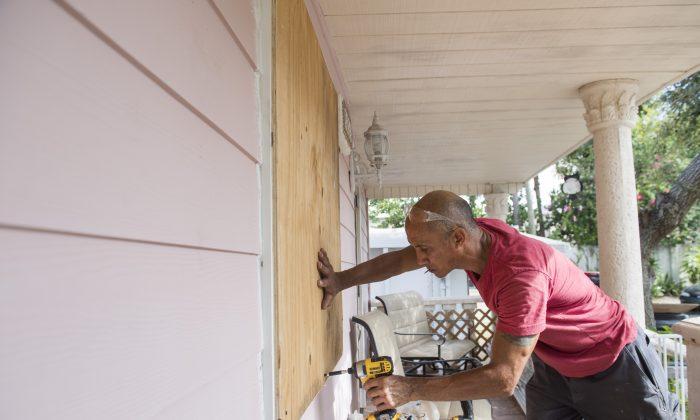Florida Power & Light (FPL) is shutting down Florida’s only two active nuclear reactors as the state braces for the arrival of Hurricane Irma, but the risk is minimal, said FPL CEO Eric Silagy.
“We are not taking any chances,” said Silagy. He said that the plants were likely the strongest engineered facilities in the world.
The nuclear plants at Turkey Point and St. Lucie are on Florida’s Atlantic Coast, where Irma is expected to concentrate much of its fury.
Silagy noted the Turkey Point station suffered a direct hit from Category 5 Hurricane Andrew in 1992.
“And Turkey Point had no issues with the nuclear equipment that was there,” he said.
“We have safely operated these plants for over 40 years,” he noted.

Turkey Point and St. Lucie are Florida’s only operating nuclear power plants, while a third is in the process of being decommissioned.
That site, Crystal River, has been permanently shut down and is in “SAFSTOR” status, where actual decommissioning is deferred for years, said Scott Burnell, a spokesman for the Nuclear Regulatory Commission (NRC).
The site’s spent fuel is safely stored, said Burnell.
“The available evidence shows the site will remain safe during and after the storm,” he said.
That plant is also further up Florida’s Gulf Coast while the active plants are at the southern end of Florida’s Atlantic Coast, where Irma is expected to be stronger.
“This is an extremely dangerous storm,” Rob Gould, chief communications officer at FPL, told reporters on Thursday.
All U.S. nuclear plants are built to withstand hurricanes and other natural disasters, according to NCR.
Florida’s nuclear reactors are enclosed in a three-to-four-f00t, steel-reinforced concrete building, lined with 2 inches of steel, with the generators housed in another 3-7-inch concrete containment structure, according to FPL’s website.
The plants were also shut down in advance of Hurricane Andrew, which sustained winds up to 145 mph—175 mph. Andrew ran straight into the Turkey Point station in 1992.
Andrew caused extensive damage to parts of the plant.
“The hurricane knocked out all offsite power for the plant for more than five days, caused the total loss of the plant’s communication systems, blocked the access road to the site with debris, and damaged the fire protection and security systems as well as the warehouse facilities,” wrote Dave Lockbaum, one of the nation’s top independent experts on nuclear power, in 2011.
The site’s design overlooked key risks, including putting the emergency diesel generator in a vulnerable location, he wrote for the Union of Concerned Scientists.
“A good design would not have high winds disable the fire water system and seriously challenge the backup power system,” he wrote.
But despite the onslaught, the site survived without damage to the nuclear generators’ safety related systems beyond some minor water intrusion.
No radiation was released to the environment and the nuclear units remained in a stable condition.
Irma is expected to eclipse Andrew.
The U.S. NRC told CNN it expects Turkey Point to be shut down Friday evening and St. Lucie to go offline about 12 hours later, depending on the storm track.
FPL said in a media release it has 11,000 employees and contractors ready to restore power and deal with the storm.
The company is urging customers to finalize preparations as Irma bears down.
Residents should be careful with backup generators, keeping them outside to avoid exhaust, and stay away from downed power lines, warned FPL CEO and President Silagy on Friday.
“We will work 24/7 to get the lights back on ... but this is a major storm and it is going to take time,” said Silagy.
“We do everything we can to prepare and we drill for these kinds of events year round.”





